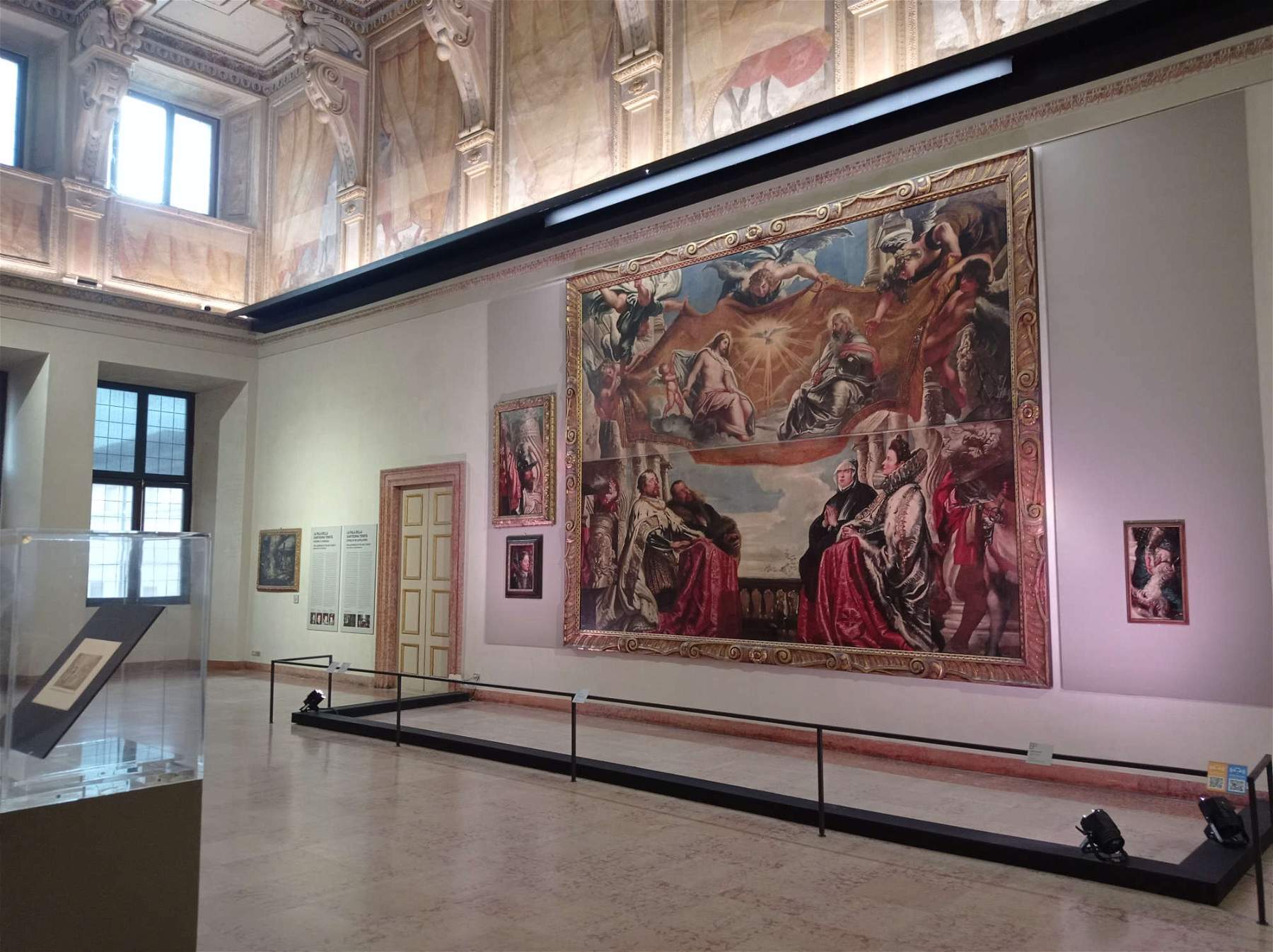Mantua, Doge's Palace refurbishes the Doge's Apartment.
In Mantua, the DucalApartment of the Ducal Palace has been completely refurbished. The Appartemtno Ducale is the wing of Corte Vecchia radically renovated by Duke Vincenzo I Gonzaga in the early seventeenth century under the direction of the prefect of factories Antonio Maria Viani. The construction of what documents refer to as “rooms nine” contemplated the readjustment of the 15th-century “Domus Nova,” designed by Tuscan architect Luca Fancelli, the addition of the large Sala degli Arcieri, and the construction of a gallery that was later closed and became, by the 18th century, the present Galleria degli Specchi. The new exhibit is available to visitors starting Saturday, October 7, 2023, as part of the Rubens at the Ducal Palace initiative.
Pieter Paul Rubens arrived in Mantua in 1600 in the service of Duke Vincenzo I Gonzaga, and during his stay he sought every possible opportunity to travel, to study Italian art, to meet artists and patrons, and to work far beyond the confines of the Gonzaga clientele. Rubens’ Mantuan masterpiece, as well as his most challenging work, was the triptych for the church of the Holy Trinity, strongly desired by the Gonzaga. In the center of the chancel was the large canvas depicting the Gonzaga Family in adoration of the Holy Trinity, flanked on the left wall by the Baptism of Christ and on the right by the Transfiguration. At the time of ecclesiastical suppressions in the Napoleonic era, two of the three canvases were immediately removed. In 1797 the French, having just entered the city, took away the Transfiguration, which reached Paris and was then destined for Nancy, where it is still located today (Musée des Beaux-Arts, inv. 71). In 1801, after the interlude of Austrian rule (1799-1801), the city was again occupied by Napoleonic troops and the Baptism of Christ was stolen “by a French soldier”: the painting is now in Antwerp, Koninklijk Museum voor Schone Kunsten (inv. 707). The central altarpiece thus remained in Mantua, despite an attempted theft and the cutting into two wide horizontal bands, which were saved along with some fragments.
The altarpiece is a grand dynastic celebration of the Gonzaga family. As is always the case in Rubens’ work, endless ideas and suggestions are reworked into an autonomous language of extraordinary modernity. Every detail of his work takes on new life and a different meaning, revitalized and integrated into a new form, into a way of painting that is at once the synthesis of the trends in Italian art between the late 16th and early 17th centuries, but also something absolutely new: the seed of the Baroque style. When he arrived in Mantua in 1600, Rubens was a very promising young artist; by the time he left Italy (1609) he was an established master and would soon become a star of the European Baroque.
On display in the Ducal Apartment of the Gonzaga palace are works from the museum’s permanent collection ranging from the late 16th century to the late 17th century: the rooms, enhanced by a new museographic and lighting design, are described by a new core of room panels. The focal point of this renewed itinerary is the Sala degli Arcieri, where the very Altarpiece of the Holy Trinity is on display , the story of which will be told through a multimedia apparatus that contextualizes the work in the place for which it was conceived, today no longer accessible to the public. A permanent installation that stands as an indispensable moment for understanding the Mantuan phase of the great master of Baroque painting.
To show in depth these monumental environments Palazzo Ducale organizes a service of accompanied tours by the museum’s reception staff active from October 14 until December 30, 2023. Every Saturday - at 9:30 a.m., 11:30 a.m., 2:30 p.m. and 4:30 p.m. - groups of up to 25 people will leave to discover the collections and the most important aspects of the great halls that make up this part of the palace. During the tour, aspects of the patronage of Duke Vincent I, who called to the court of Mantua important artists of the time, among whom the most famous was the young Rubens himself, will be illustrated. The tour runs through the Halls of the Crucible, the Labyrinth, and Judith, to the great Hall of the Archers where other important works by Domenico Fetti and Antonio Maria Viani are also on display (by the latter is the altarpiece with Saint Margaret presented to the Trinity), as well as the sketch for the Martyrdom of Saint Ursula by Rubens himself. Special attention will also be paid to the nucleus of paintings and sculptures coming from the palace of Mirandola and transferred to the Ducal Palace in 1716, by artists such as Sante Peranda, Andrea Baratta and Lorenzo Ottoni. The tours, which last about an hour, can be signed up via phone on 0376 352100 and attended with any museum admission ticket (€5 and up or annual pass). The meeting point is at the exit of the current museum route, Piazza Sordello 40 under the arcades.
 |
| Mantua, Doge's Palace refurbishes the Doge's Apartment. |
Warning: the translation into English of the original Italian article was created using automatic tools. We undertake to review all articles, but we do not guarantee the total absence of inaccuracies in the translation due to the program. You can find the original by clicking on the ITA button. If you find any mistake,please contact us.





























